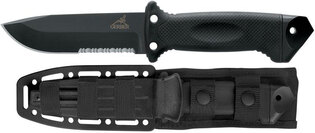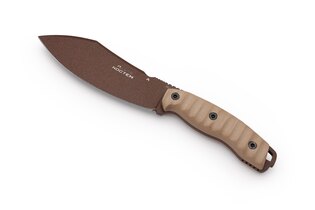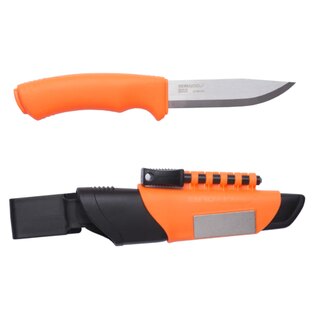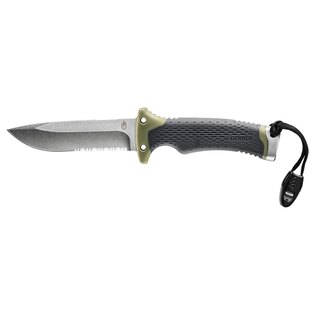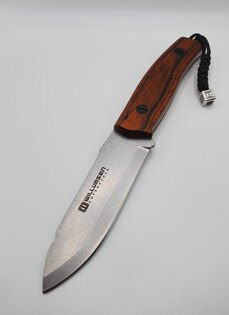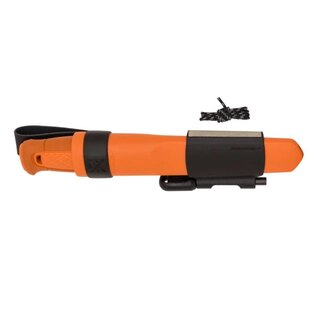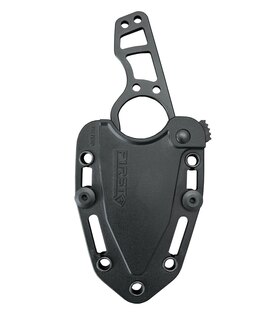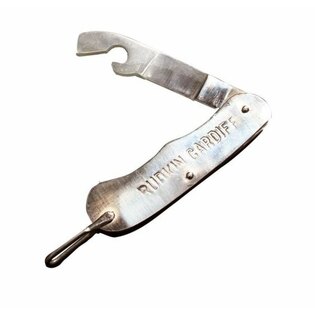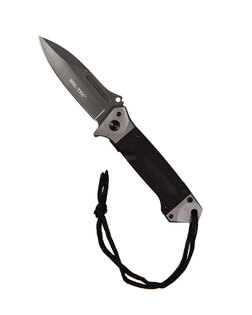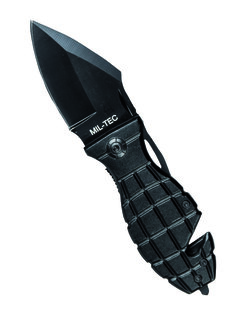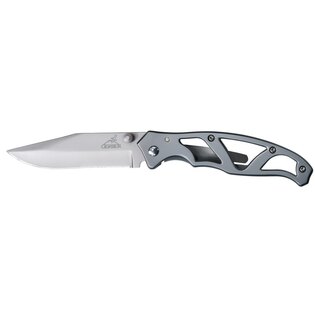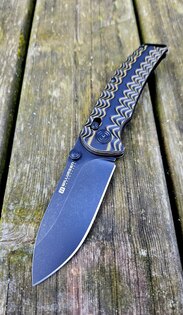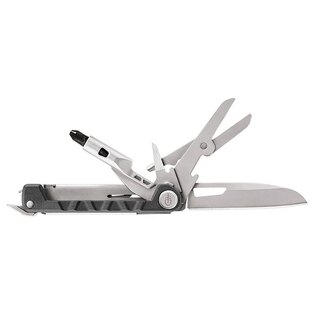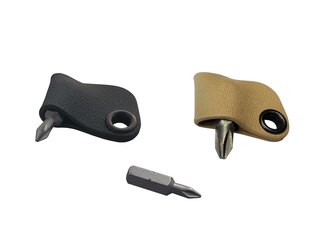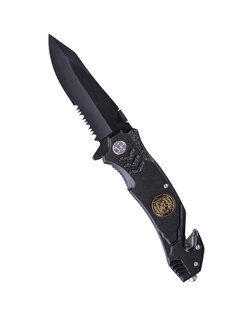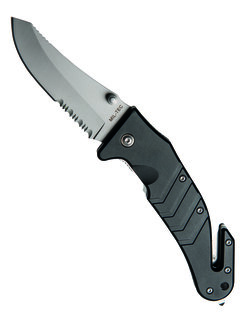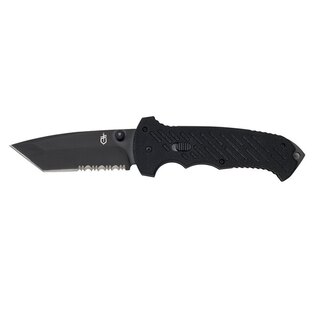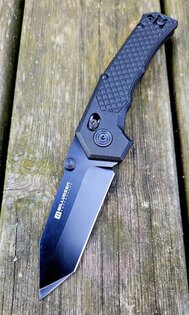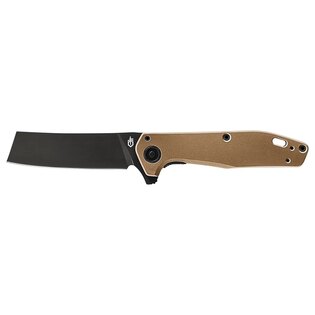Which knife grind is the best? An overview of the most common grinds.
Oftentimes, we wonder what kind of steel is a knife made of, what shape the blade is, what the overall size is... When choosing, we consider the material and design of the sheath. However, a featurewe usually do not think of in a knife is its grind and the relationship between the grind and the thickness of the blade. At the same time, the shape of the grind actually plays the key role in whether the blade will be more durable or perfectly cutting, or whether it will be a compromise and the blade will be more universal and of average properties. So which blade to choose for which occasion? And is it even important to think about the knife's grind?
In order to better understand this subject matter, it is also important to remember that the given information is rather general and, in addition to the type of the grind, the thickness of the blade also comes into play.
That is, the thicker the blade, the more resistant it is to rough handling, but the worse the cutting performance of the knife. On the contrary, a thinner blade will be suitable for cutting and slicing, but with rougher handling, chopping, batoning or prying, it will be more prone to damage.
Now let's get to the actual types of grind.
Flat grind
This is a very common type of grind where the blades gets gradually thinner from the spine to the cutting edge ending with a bevel.
- The advantage of this knife is its universality.
- The knife features great cutting properties especially with thinner blades while maintaing suficient durability.
- This grind is perfectly suitable for cutting which is why it is often used in kitchen knives.
- When performing rougher tasks with the knife, it can get damaged quite easily.
Typical flat grind knives:

Noctem Hydra Knives®
Blade grind
It is similar to the flat grind, only the blade does not gets thinner all the way from the spine. Even here, the blade ends with a bevel.
- Unlike in the flat grind, here the blade retains its maximum thickness in the upper part.
- This gives the knife higher durability. Knives with this grind are better for rougher work, chopping and batoning.
- These are often military knives, survival knives, or larger outdoor and bushcraft knives that can partially do the job of an axe.
- The cutting properties of such a blade will be a little lower than in the flat grind, because the angle of the blade is larger and it therefore does not penetrate the material being cut that easily.
Typical balde grind knives:

StrongArm by GERBER®
Scandi grind
Another popular grind is the scandi grind which is often used in Scandinavian knives.
- For example the famous Morakniv knives feature this type of grind.
- Very often it is mistaken for the blade grind, but there is big a difference between the two, as the scandi grind does not have a bevel, or we can actually say that the whole knife's grind is a bevel.
- Due to its sharp angle, this grind is perfect for cutting and penetrating the objects being cut.
And as you may suspect now, it is not suitable for rough handling as the thin cutting edge gets damaged quite easily.
Typical scandi grind knives:
OK4 Bushcraft knife by Hultafors®
Swedish MORAKNIV® knives

Swedish MORAKNIV® knives
Convex grind
This is a type of grind, where the blade forms a kind of a lens shape in cross-section. It is rounded outwards and the edge is not finished with a bevel.
- At first glance, such grind could be confused with a flat grind, but thanks to the rounding, more material remains and the steel is not so thinned.
- We can even say that the convex grind blade is one of the most durable blade types ever.
- The disadvantage, on the other hand, is a poorer cutting ability. The material left in addition for better resistance prevents smooth penetration of the blade into the objects, food, etc. being cut.
- The convex grind is not used as much as the other mentioned types due to the greater complexity of manufacture and the difficulty of subsequent sharpening by the user.
- This grind is often used in axes.
Hollow grind
It is another widely used type of grind, where the blade is ground concavely. So it is kind of the opposite to convex.
- The blade is finished with a bevel.
- The thinning of the blade has the advantage of good cutting ability. The blade is thin in the lower part and therefore penetrates the cut materials better.
- The downside is again the durability, as the thinned blade is more prone to damage from rough handling.
- A large inward curvature of the blade can also make sharpening of the edge more difficult.
- The hollow grind is often used in hunting knives and is also known for being used in barber's razors.
Typical hollow grind knives:
Kobun by Cold Steel®
Jarosz Spear folder by KA-BAR®

Jarosz Spear folder by KA-BAR
There are also other types of grind that are not so common, which is why we do not cover them in this article.
Which type of grind is the best?
It is actually a personal choice and what really matters is how we want to use the knife.
There is an option to use one larger, more robust knife with a saber or convex grind for rougher basic woodwork and a second smaller knife with a thinner blade equipped with a flat, hollow or scandi grind.
If you look for one all-purpose knife that does all the work, it will largely depend on how demanding you will be.
Some people don't need a knife for fine cutting and prefer a thicker blade that can withstand everything.
Other people, on the other hand, use knife for finer work and choose a thinner blade, and reach out for an axe when it comes to hard work.
The choice is only yours and all depends on your individual preferences.
Readers are further interested
























































































































